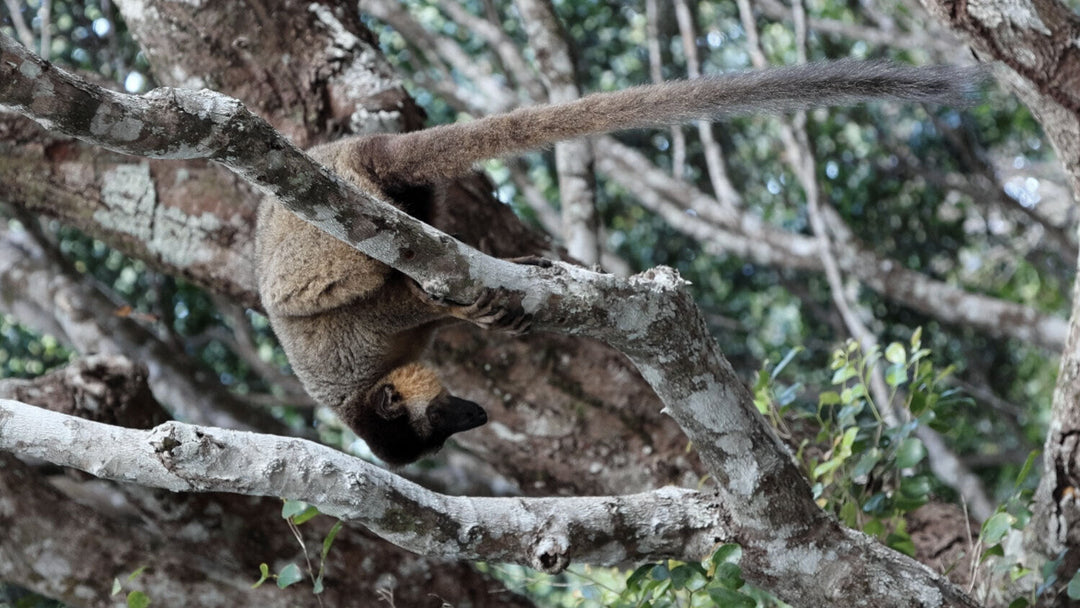Playful otters eating fish and foraging together
For the past 5 years, NatureSpy has been monitoring wildlife with trail cameras in the North York Moors National Park.
During this time, we’ve gathered footage of 62 different species, including rare pine martens, stunning birds of prey and magnificent red deer stags. With the help of our volunteers, we’ve created thousands of ecological records. In this video series we share some of our favourite trail camera footage from the North York Moors. This episode is all about otters!
Otters are semi-aquatic mammals that are part of the Mustelidae family, alongside badgers, stoats and pine martens. There are 13 species of otter in the world and Eurasian otters (Lutra lutra) are our native species in Britain and Ireland. Eurasian otters are important indicators of healthy river ecosystems as they are apex predators at the top of the food chain and are highly sensitive to pollution. They were once pushed to the brink of extinction in the UK, almost disappearing from England by the 1970s due to a combination of pollution habitat loss and hunting. This catastrophic decline in the species resulted in full protection of otters in Britain and Ireland. Otter recovery has made significant progress in recent decades, thanks to legal protections and concerted efforts to restore otter numbers and improve water quality. Continued conservation of otters is important to ensure their habitats are protected and the species can live in healthy numbers nationwide.

Otter identification
Eurasian otters have distinctive dark-brown fur, which is denser and fluffier in winter. They have long, muscular bodies, weighing between 7 – 12kg, measuring 60 – 90cm in length, with a long, sleek tail measuring 35 – 45cm. They have webbed feet, which make them excellent swimmers, and they can hold their breath for up to 8 minutes while underwater.
If you’re lucky enough to see an otter in person there are some key characteristics to look out for.
Habitat
Eurasian otters are primarily found in freshwater habitats, including rivers, streams, lakes, and marshes. They also inhabit coastal areas and can swim in saltwater. They prefer areas with plenty of vegetation and shelter, such as fallen logs and overhanging vegetation, where they can build their dens, known as holts.

Otters foraging together on a riverbank.
Behaviour and diet
Eurasian otters are known for their playful behaviour. They are active day and night, although they are largely nocturnal. Otters are often solitary but can also occasionally be seen in family groups. Females typically give birth to two or three cubs.
Otters spend much of their active time swimming and hunting for fish, crustaceans, and amphibians. Their varied diet also occasionally includes eat birds and small mammals.
Otters communicate with one another through their poo, known as spraint. They do this to let each other know of their presence and mark territories.

Otters communicate their territories with carefully placed droppings, known as spraint.
Otter Conservation
Eurasian otters are widely distributed across Europe and into parts of Asia and northern Africa. The species is listed as a "near threatened" by the International Union for Conservation of Nature (IUCN) due to habitat loss and pollution. In many areas, they have disappeared entirely, while in others, they have been reintroduced through conservation efforts.
Conservation efforts include the protection of freshwater habitats, the restoration of degraded habitats, and the reduction of pollution. Otter populations have increased in some areas, such as the UK, due to successful conservation efforts.
Mad about mustelids?
Check out our illustrated mustelid identification guide, which includes tips for effective trail camera monitoring of otters, pine martens, polecats, stoats, weasels, mink and badgers.
FAQs
What family do otters belong to?
Otters belong to the Mustelidae family, which includes badgers, stoats, and pine martens.
How many species of otter are there in the world?
There are 13 species of otter in the world.
What is the native otter species in Britain and Ireland?
The native otter species in Britain and Ireland is the Eurasian otter (Lutra lutra).
What are some key characteristics to look out for when identifying an otter?
Eurasian otters have distinctive dark-brown fur, long muscular bodies, webbed feet, and a long sleek tail measuring 35-45cm. They can hold their breath for up to 8 minutes while underwater.
What is the conservation status of the Eurasian otter and what efforts are being made to protect them?
The Eurasian otter is listed as "near threatened" by the International Union for Conservation of Nature (IUCN) due to habitat loss and pollution. Conservation efforts include protecting freshwater habitats, restoring degraded habitats, and reducing pollution. Otter populations have increased in some areas, such as the UK, due to successful conservation efforts.



